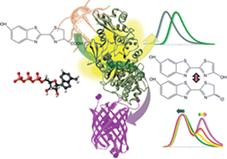Take a look at our new HOT articles just published in Analyst and free for you for the next couple of weeks:
Two-dimensional MoS2 nanosheets as a capillary GC stationary phase for highly effective molecular screening
Jia Jia, Fujian Xu, Shanling Wang, Xue Jiang, Zhou Long and Xiandeng Hou
Analyst, 2014, Advance Article
DOI: 10.1039/C4AN00332B, Communication
On the optimization of operating conditions for Taylor dispersion analysis of mixtures
Hervé Cottet, Jean-Philippe Biron and Michel Martin
Analyst, 2014, Advance Article
DOI: 10.1039/C4AN00192C, Paper
Capillary electrophoresis based on the nucleic acid detection in the application of cancer diagnosis and therapy
Dong-Sheng Lian and Shu-Jin Zhao
Analyst, 2014, Advance Article
DOI: 10.1039/C4AN00400K, Minireview
Micropatterning neuronal networks
Heike Hardelauf, Sarah Waide, Julia Sisnaiske, Peter Jacob, Vanessa Hausherr, Nicole Schöbel, Dirk Janasek, Christoph van Thriel and Jonathan West
Analyst, 2014, Advance Article
DOI: 10.1039/C4AN00608A, Paper
BRET-linked ATP assay with luciferase
Golnaz Borghei and Elizabeth A. H. Hall
Analyst, 2014, Advance Article
DOI: 10.1039/C4AN00436A, Paper
An ultra-high-throughput spiral microfluidic biochip for the enrichment of circulating tumor cells
Majid Ebrahimi Warkiani, Bee Luan Khoo, Daniel Shao-Weng Tan, Ali Asgar S. Bhagat, Wan-Teck Lim, Yoon Sim Yap, Soo Chin Lee, Ross A. Soo, Jongyoon Han and Chwee Teck Lim
Analyst, 2014, Advance Article
DOI: 10.1039/C4AN00355A, Paper
A purge and trap integrated microGC platform for chemical identification in aqueous samples
Muhammad Akbar, Shree Narayanan, Michael Restaino and Masoud Agah
Analyst, 2014, Advance Article
DOI: 10.1039/C4AN00254G, Paper
Hybridization chain reaction-based fluorescence immunoassay using DNA intercalating dye for signal readout
Yan Deng, Ji Nie, Xiao-hui Zhang, Ming-Zhe Zhao, Ying-Lin Zhou and Xin-Xiang Zhang
Analyst, 2014, Advance Article
DOI: 10.1039/C4AN00190G, Paper
Evaluating the sensitivity of hybridization-based epigenotyping using a methyl binding domain protein
Brandon W. Heimer, Tatyana A. Shatova, Jungkyu K. Lee, Kaja Kaastrup and Hadley D. Sikes
Analyst, 2014, Advance Article
DOI: 10.1039/C4AN00667D, Communication
Qualitative SERS analysis of G-quadruplex DNAs using selective stabilising ligands
K. Gracie, V. Dhamodharan, P. I. Pradeepkumar, K. Faulds and D. Graham
Analyst, 2014, Advance Article
DOI: 10.1039/C4AN00551A, Paper
A water-soluble sulfonate-BODIPY based fluorescent probe for selective detection of HOCl/OCl in aqueous media
Jiyoung Kim and Youngmi Kim
Analyst, 2014,139, 2986-2989
DOI: 10.1039/C4AN00466C, Communication
A coumarin-based fluorescent probe for differential identification of sulfide and sulfite in CTAB micelle solution
Haiyu Tian, Junhong Qian, Qian Sun, Chenjia Jiang, Runsheng Zhang and Weibing Zhang
Analyst, 2014, Advance Article
DOI: 10.1039/C4AN00478G, Paper
Upconversion nanoparticles for ratiometric fluorescence detection of nitrite
Junfen Han, Cheng Zhang, Fei Liu, Bianhua Liu, Mingyong Han, Wensheng Zou, Liang Yang and Zhongping Zhang
Analyst, 2014,139, 3032-3038
DOI: 10.1039/C4AN00402G, Paper
Split aptazyme-based catalytic molecular beacons for amplified detection of adenosine
Jin Huang, Yong He, Xiaohai Yang, Kemin Wang, Ke Quan and Xiaoping Lin
Analyst, 2014,139, 2994-2997
DOI: 10.1039/C4AN00454J, Communication
High-performance Hg2+ FET-type sensors based on reduced graphene oxide–polyfuran nanohybrids
Jin Wook Park, Seon Joo Park, Oh Seok Kwon, Choonghyen Lee and Jyongsik Jang
Analyst, 2014, Advance Article
DOI: 10.1039/C4AN00403E, Communication
One-step prepared fluorescent copper nanoclusters for reversible pH-sensing
Wei Wang, Fei Leng, Lei Zhan, Yong Chang, Xiao Xi Yang, Jing Lan and Cheng Zhi Huang
Analyst, 2014,139, 2990-2993
DOI: 10.1039/C4AN00113C, Communication

























 nt surveys from Allergy UK have shown that the rates of allergy are increasing throughout the world, affecting up to 30-35 % of people at some point during their lives, in some cases with fatal consequences. In vitro testing of specific Immunoglobin E (IgE) reactivities is thought to be able to significantly improve diagnostic accuracy and management in primary care. IgE plays a significant role in allergic conditions. Current methods for the sensitive and accurate detection of specific IgE reactivities are expensive; require significant sample preparation and investment in equipment. There is a need to provide a cheap, rapid, sensitive and specific test for IgE reactivities.
nt surveys from Allergy UK have shown that the rates of allergy are increasing throughout the world, affecting up to 30-35 % of people at some point during their lives, in some cases with fatal consequences. In vitro testing of specific Immunoglobin E (IgE) reactivities is thought to be able to significantly improve diagnostic accuracy and management in primary care. IgE plays a significant role in allergic conditions. Current methods for the sensitive and accurate detection of specific IgE reactivities are expensive; require significant sample preparation and investment in equipment. There is a need to provide a cheap, rapid, sensitive and specific test for IgE reactivities.